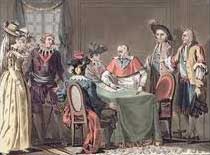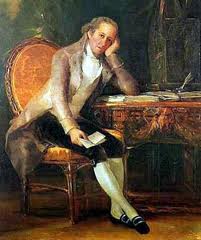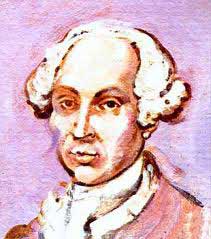Spanish Enlightenment Literature
The Enlightenment was a comprehensive cultural movement that shifted the values of western society towards a keen interest for knowledge and explanatory reasoning. Consequently, Enlightenment literature is dominated by non-fiction production, such as essays and treatises, ahead of fictional accounts or poetic musings.
In this sense, Spanish Enlightenment is no exception to the rule, as the literature of the time is largely concerned with the exploration of contemporary political and economic theories.The turn of the XVIII century found Europe in a short interlude between one war and the next, while most rulers held their breath until the death of Charles II of Spain in order to settle the small matter of his successor.

Spain's prominent position among world players had diminished considerably, as was evidenced by the independence of the Dutch Republic in 1648 and the loss of French Flanders and part of Catalonia to France in the Treaty of the Pyrenees (1659).
The great beneficiary of this circumstance was Louis XIV of France, who had emerged as the most powerful monarch in Europe, and whose Bourbon dynasty now sought to replace the Habsburg monarchy, which died out with the heirless Charles II, as rulers of Spain. When Charles named Philip of Anjou, grandson to Louis XIV and Maria Theresa Habsburg of Spain, as his successor, the pieces were in place for what was little other than the continuation of the Nine Years' War.
The War of Spanish Succession continued until 1713 and derived nothing for any side, other than Philip of Anjou's (now Philip V of Spain) renunciation to any claims over the French crown. It seems paradoxical, then, that the Age of Reason should have arisen in the midst of a period of almost constant warfare in Europe, dating all the way back to the Forty Years' War.
But arise it did, and it emerged as a strong cultural trend that somehow was echoed from England to the Netherlands, to Germany and France in the work of Rationalist philosophers, from Spinoza to Leibniz, as well as British Empiricists, such as Locke and Hume, in the mathematical arguments of Newton with Leibniz, and the miscellaneous essays of progressive thinkers, such as Montesquieu and Voltaire.
The Spanish Enlightenment, like the Renaissance before it, had a slow start, certainly in relation to the countries we have mentioned. The country, mired in the deepest economic and even demographic crisis, lived through difficult times even as the new Bourbon monarchy grabbed a firmer hold on power. But slowly the negotiated peace allowed for issues of welfare and governance to take primacy.
Moratín and Jovellanos

This lead to the environment within which Gaspar Melchor Jovellanos emerged as the greatest representative of Enlightenment literature in Spain. Originally from Gijón, Jovellanos spent much of his life in Seville, where he wrote at large, primarily about politics and philosophy, as well as more practical, economic issues such as custom taxes and the agrarian reform.
While his tendencies, coherently built in support of a political system that promoted the crowning of an enlightened despot, such as Prussia's Frederick the Great or Russia's Catherine the Great, might not find much sympathy among modern readers, you can still spare a kind thought for the man if you spend some time in Spain and you find yourself driving from Leon to Gijón, as he incessantly championed the idea of a road between the two cities during his lifetime!
Outside non-fiction essays, the other outstanding literary genre of the Spanish Enlightenment was the theatre. After a long period of neglect, following the extraordinary output of the Golden Age, the XVIII century saw the return of the theatre to the centre stage of Spanish literature, with a much revised (far more classical) canon, adapted to the prevailing tastes of the audience.

Among the most outstanding exponents of the dramatic scene of the second half of the XVIII century count Leandro Fernández de Moratín, and Ramón de la Cruz. Educational and entertaining, Moratín's drama remains eminently realist. But, while Moratín was undoubtedly the most popular and successful playwright of the time, the attention of the modern sensibility has turned with interest towards the work of Ramón de la Cruz.
Far distanced from the refined art of the court, Ramón de la Cruz brought Spanish Enlightenment literature right back to its popular source, writing a vast amount of sainetes: short, funny, one-act pieces designed to be performed during the interlude or after the end of a play.
